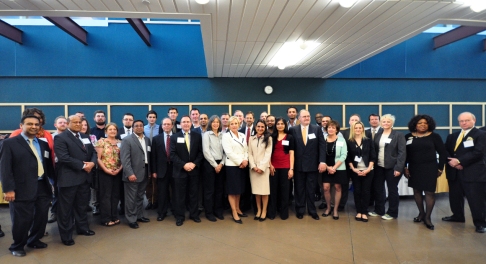“Amazon is destroying the American book industry.”
Facebook is making us dumb and Twitter is making us dumber.
Here’s how…
“Who knows what percentage of their time would have been spent reading books,” we ask the cosmos, “if they weren’t fooling around with Facebook all the time?”
They, of course, are Gen Xs, Ys and Zs… but they are baby boomers, too. We’re obsessed, all of us, with reading short bits of text. There are tweens [kids ages 10 to 12] out there today who think of themselves as people who read a lot… when what they read a lot of, are status updates and BuzzFeed lists.
It’s too late for bookstores to turn around into a profitable business again, whether it’s got thousands of Facebook friends or not. From where we stand, there’s only so much one small bookstore owner, with the help of a small handful of staffers and volunteers, can do to turn the tides of a culture that doesn’t even seem to want to sit down and read books the way it used to. With so many digital options like Kindles, tablets, blogs-memes, reality TV, Tumblrs, Facebook, and Tweets… the simple act of reading a book that you hold in your hands is seriously endangered.
All of these technological advances that seem so commonplace have barely been in our lives for a decade now. And we’ve all had the uneasy feeling on occasion, reading what our loved ones have to say on Facebook, that the nature of social-media conversation is making us dumber by the minute. I don’t think it’s even open for debate: “You cannot develop an argument in a Facebook post… it’s just impossible. And if people don’t exercise that faculty of having a proposition and presenting evidence, if people aren’t used to thinking that way, or seeing it done in books… there’s a serious intellectual decline in front of us.”
So often, we see shoppers stroll through a bookstore like Barns & Noble looking for a specific author and a title, ask if the store has it in stock… and if it’s not there, they’re not interested in having the store order it for them. Not when they can walk right back-out and order it on Amazon. It’s a scenario I see play out several times a week. It’s not that bookstores can’t get them the book in a few days, and it’s not that Barns & Nobel doesn’t have an easy-to-remember web store of its own. It’s simply that, with Amazon so ubiquitous, would-be customers don’t bat an eye at the idea that they can get whatever they want, as cheap as they want, without having to give up any convenience at all.
“Oh, I’ll go on-line”, they say… but we know they’re going to Amazon and not to Barns & Noble website. They won’t take the time to compare. Amazon isn’t just Barns and Noble’s nemesis… it’s ruining all kinds of people with all the little bookstores. They undersell everybody, basically losing money until there’s no competition.
Amazon just posted a healthy $17.09 billion in net sales during its third quarter, a 24 percent jump compared with the same period a year ago. But the company lost 9¢ per share. This is what amounts for good news to Amazon shareholders: Analysts had predicted sales of $16.77 billion and accurately predicted that 9¢ loss.
That’s a shame. Because brick-and-mortar bookstores meet other needs, beyond simply selling books, that customers won’t be able to get once Amazon is their only remaining choice.
What’s painful for any indie bookstore owner to admit, of course, is that Amazon can pretty much always give the book buyer a better deal. “There’s no question about it,” store owners will tell you. “If you come into our bookstore looking at a book that’s $25, but Amazon’s selling it for $20 for new or $10 for used.”
“There are people, who are willing and eager to pay the extra few dollars for personal service from a proprietor they know-but they’re just too few and far between.”
Here’s my take on this problem…
Little problem: “Amazon is destroying the American book industry.”
Big Problem: “Facebook is making us dumb and Twitter is making us dumber.”
Cheers and We’ll see you soon.
Anant Goel
Producer CEO – RKNet Studios





